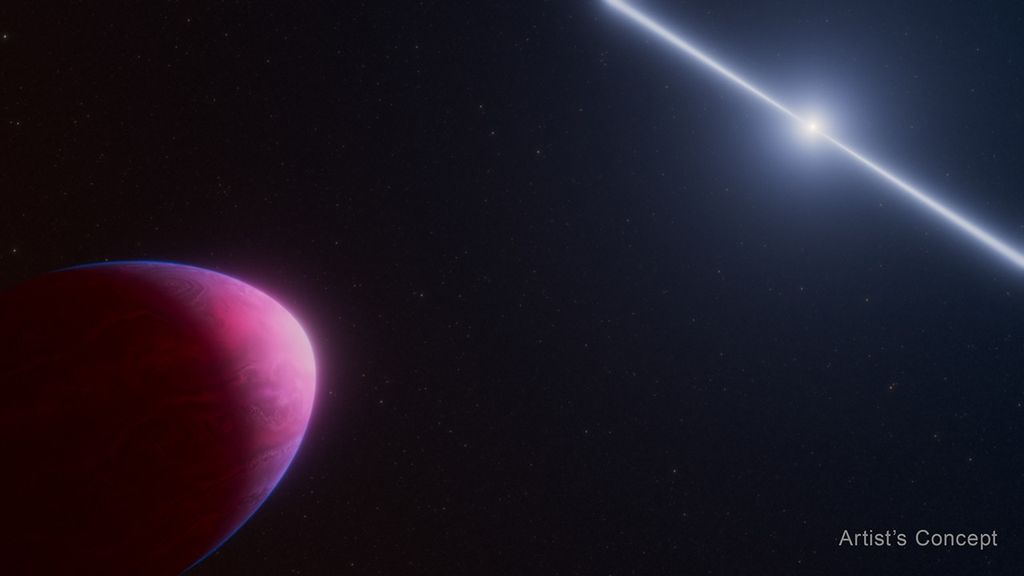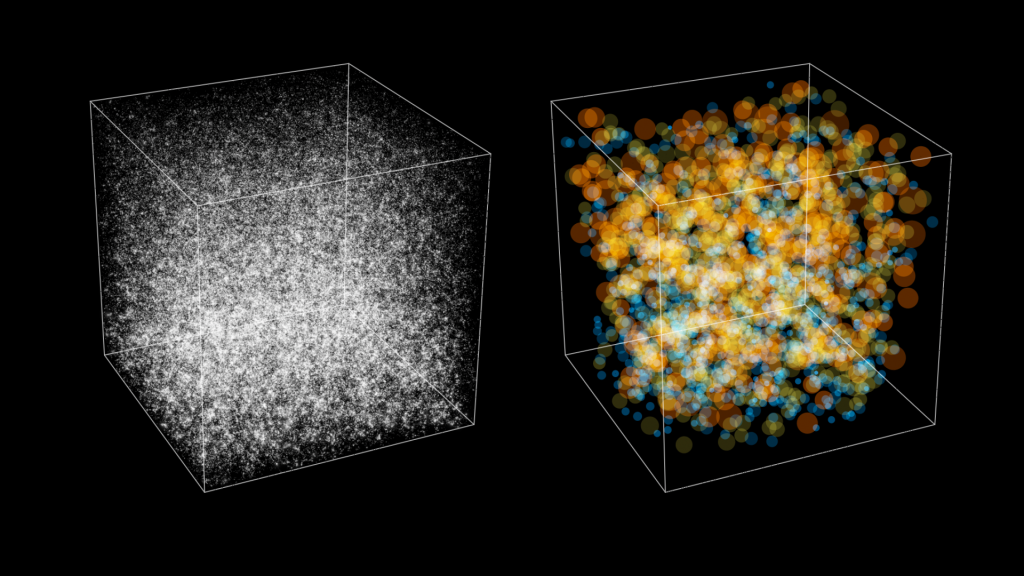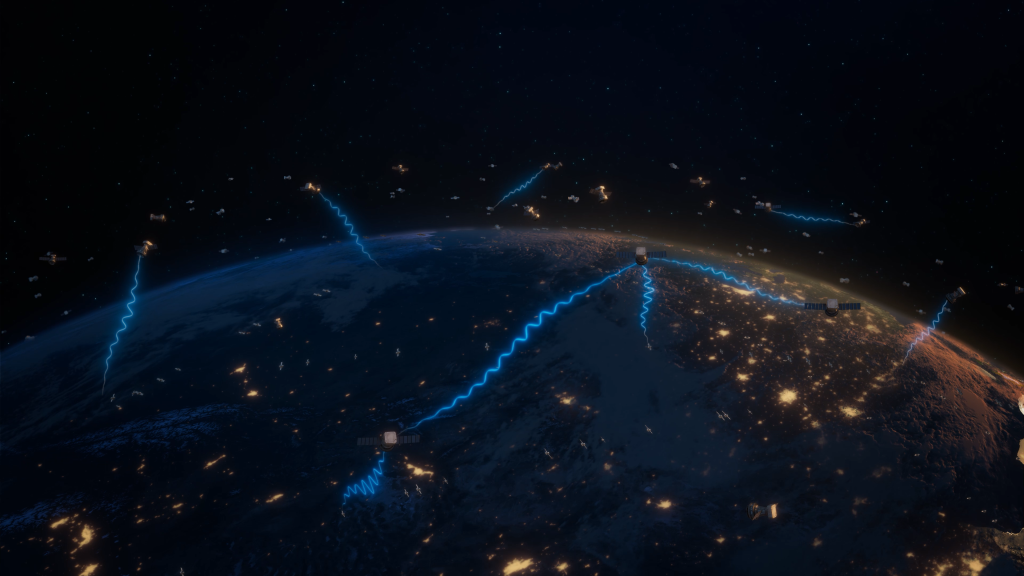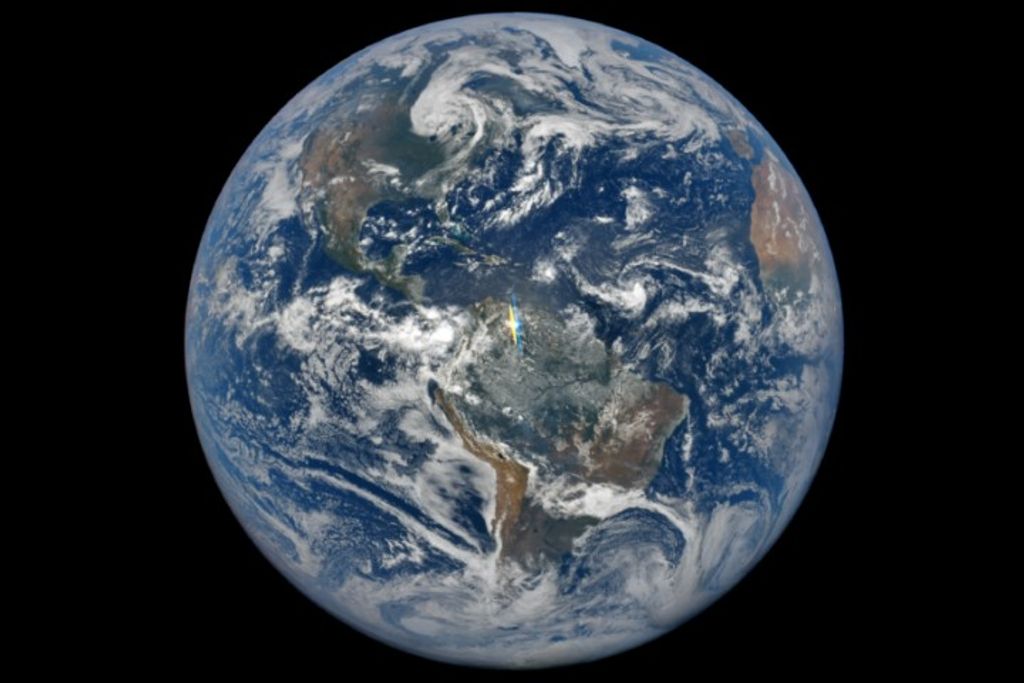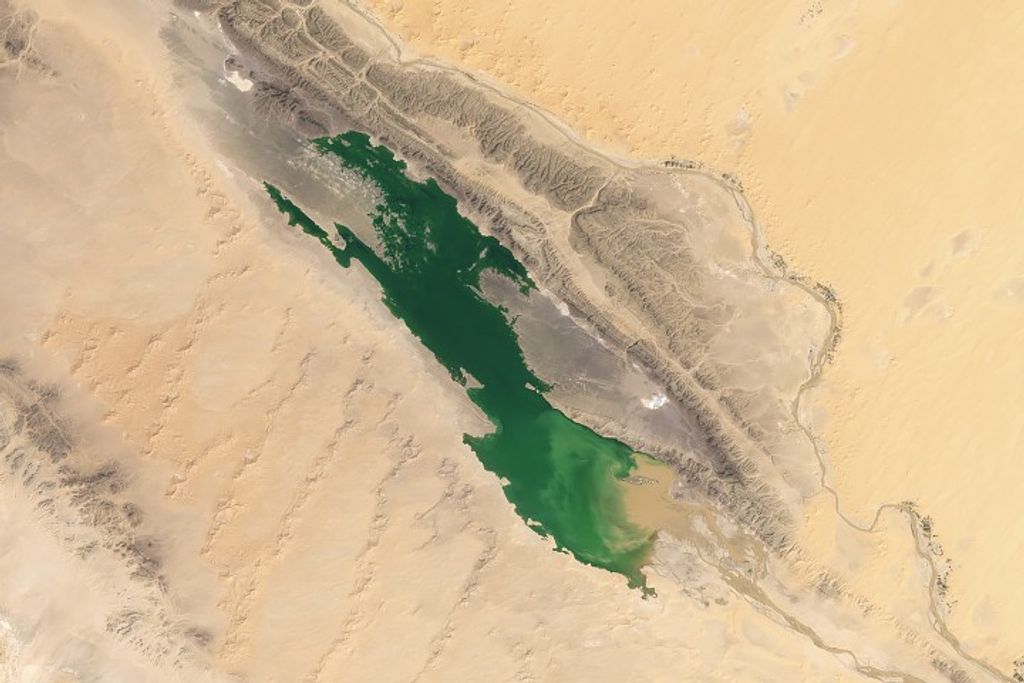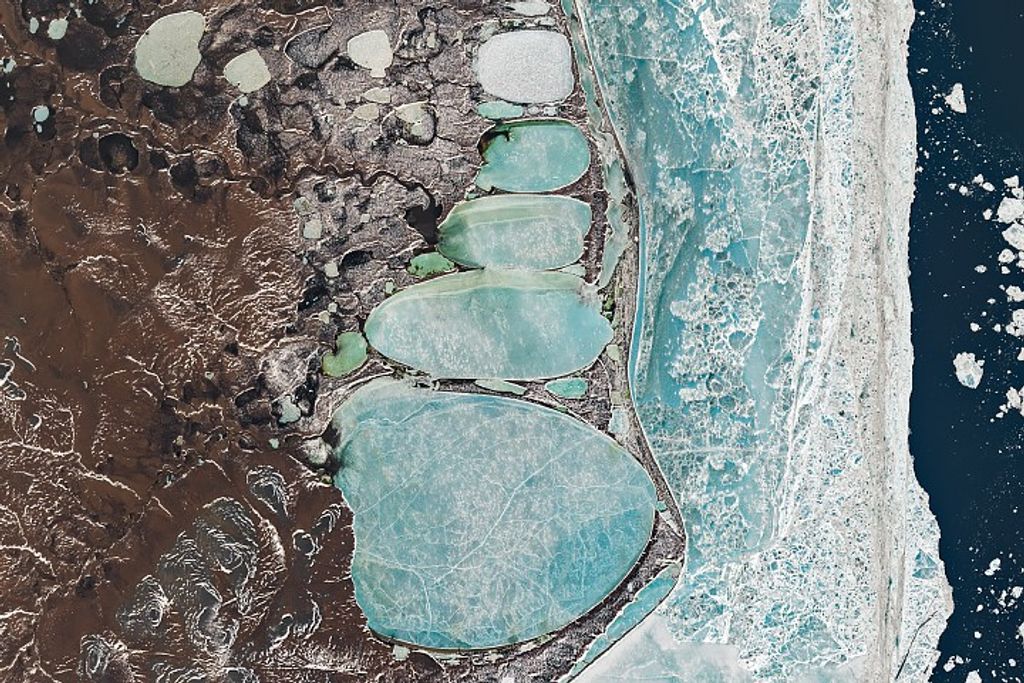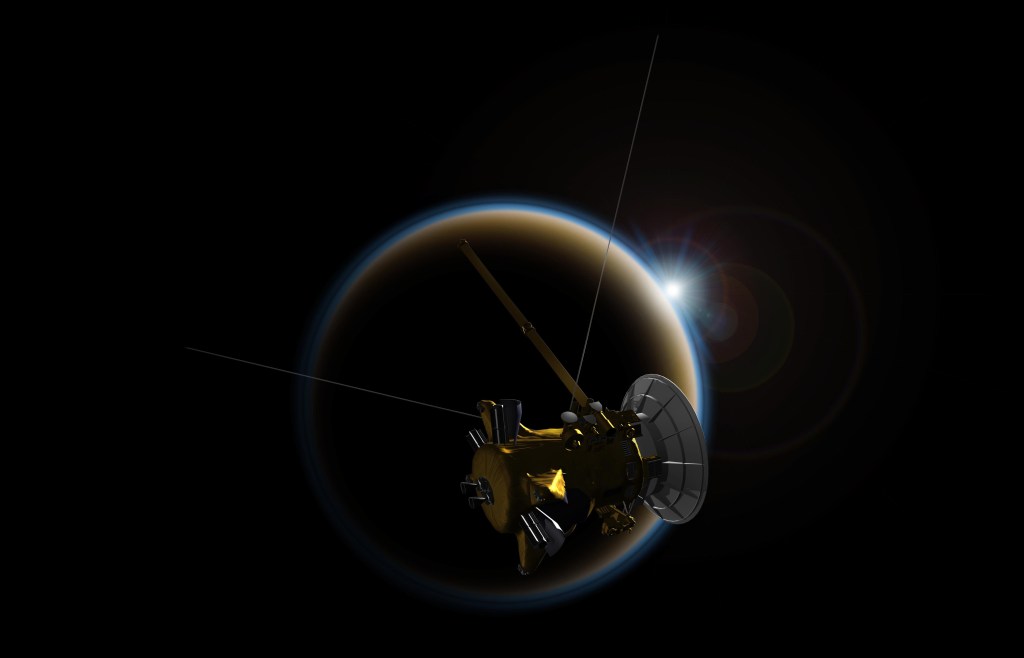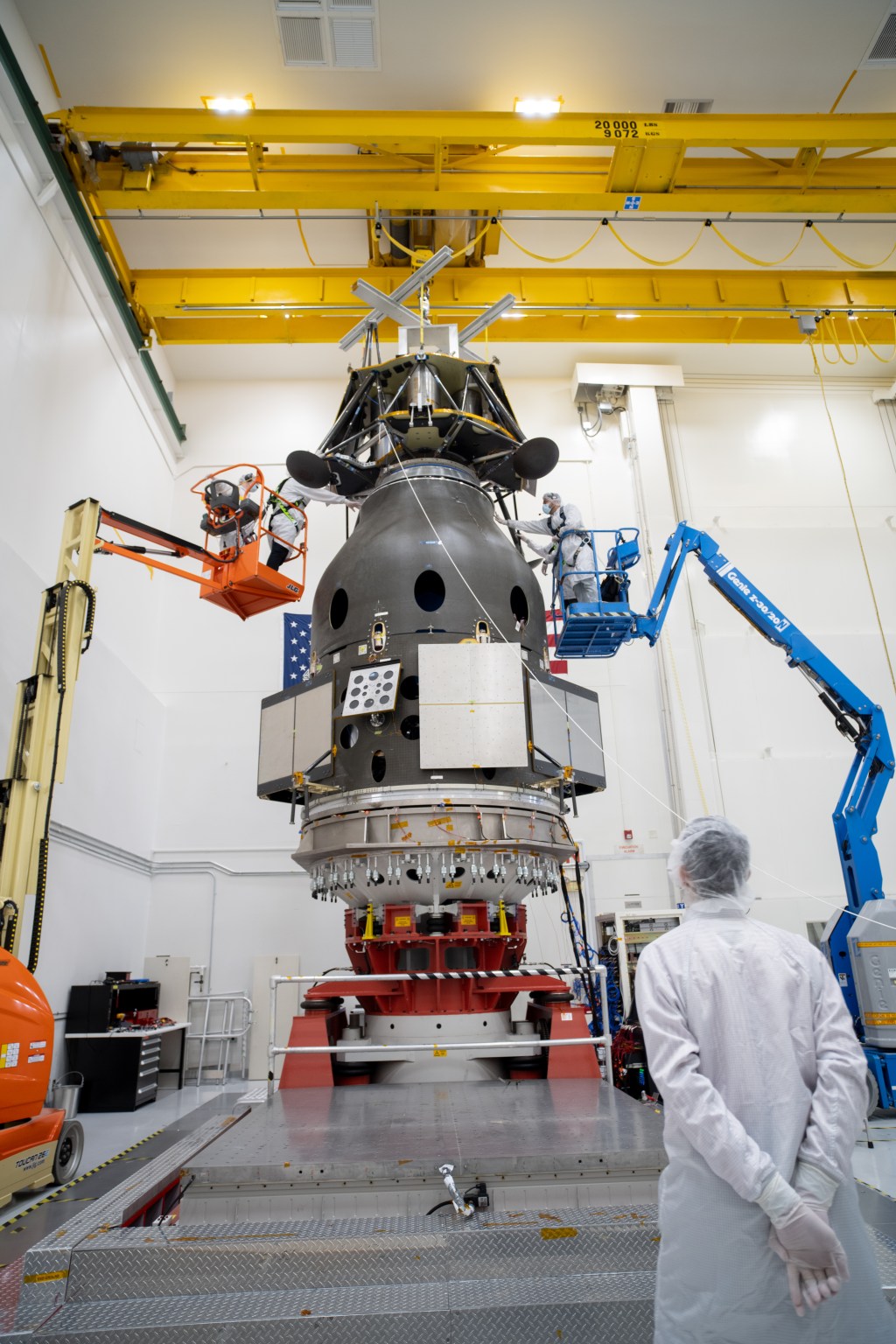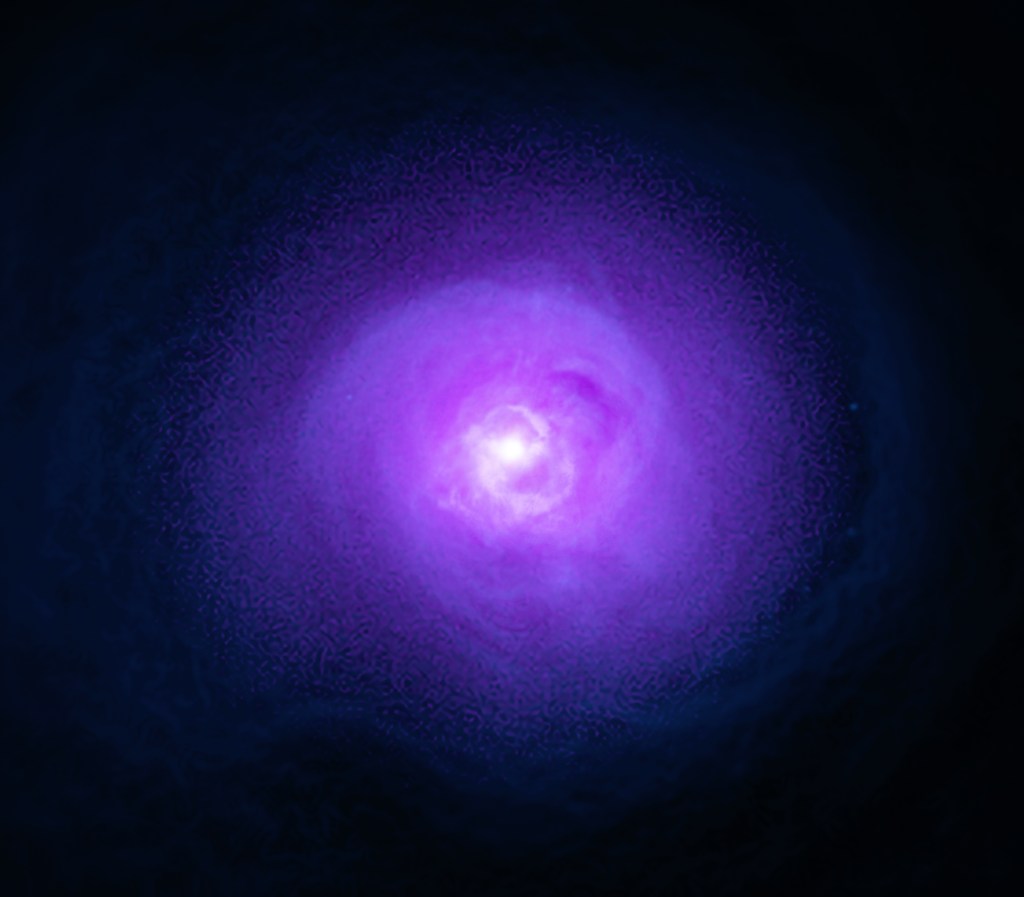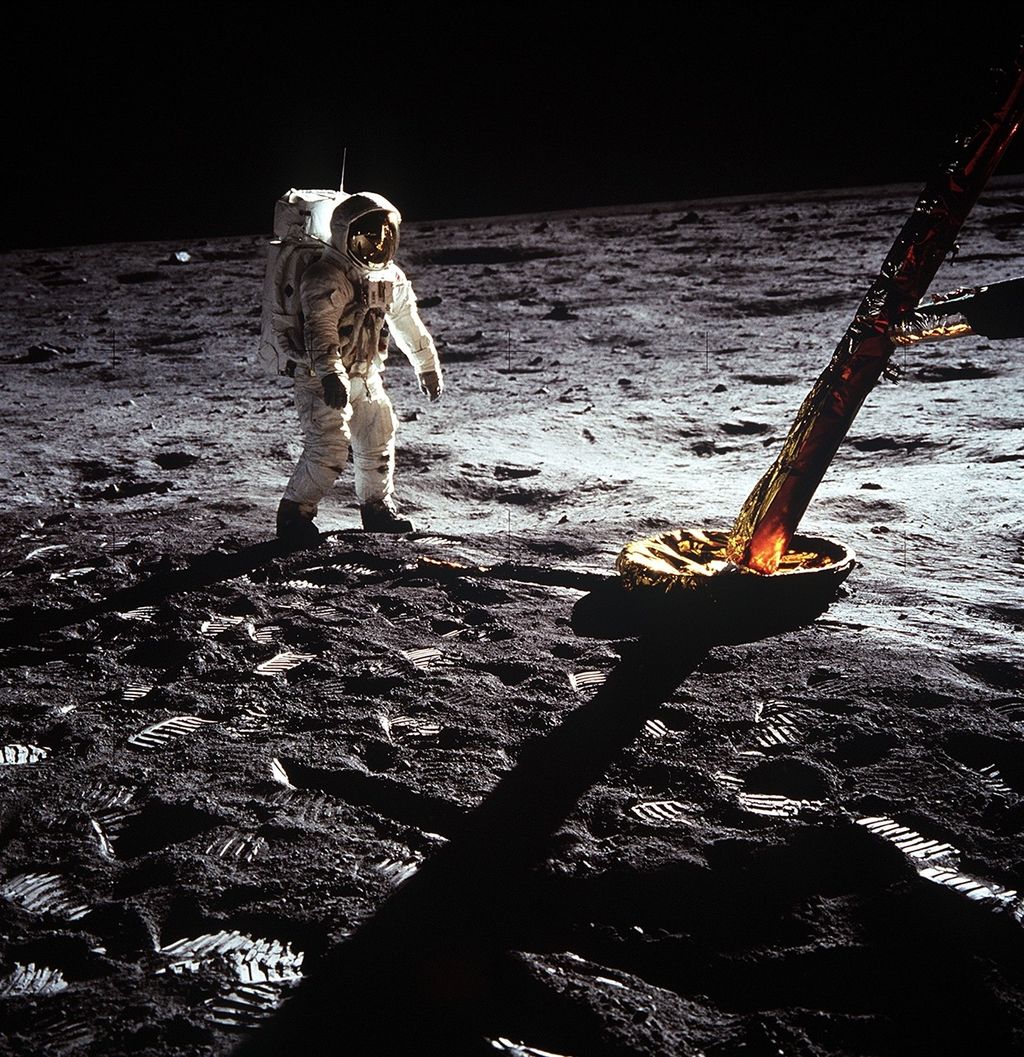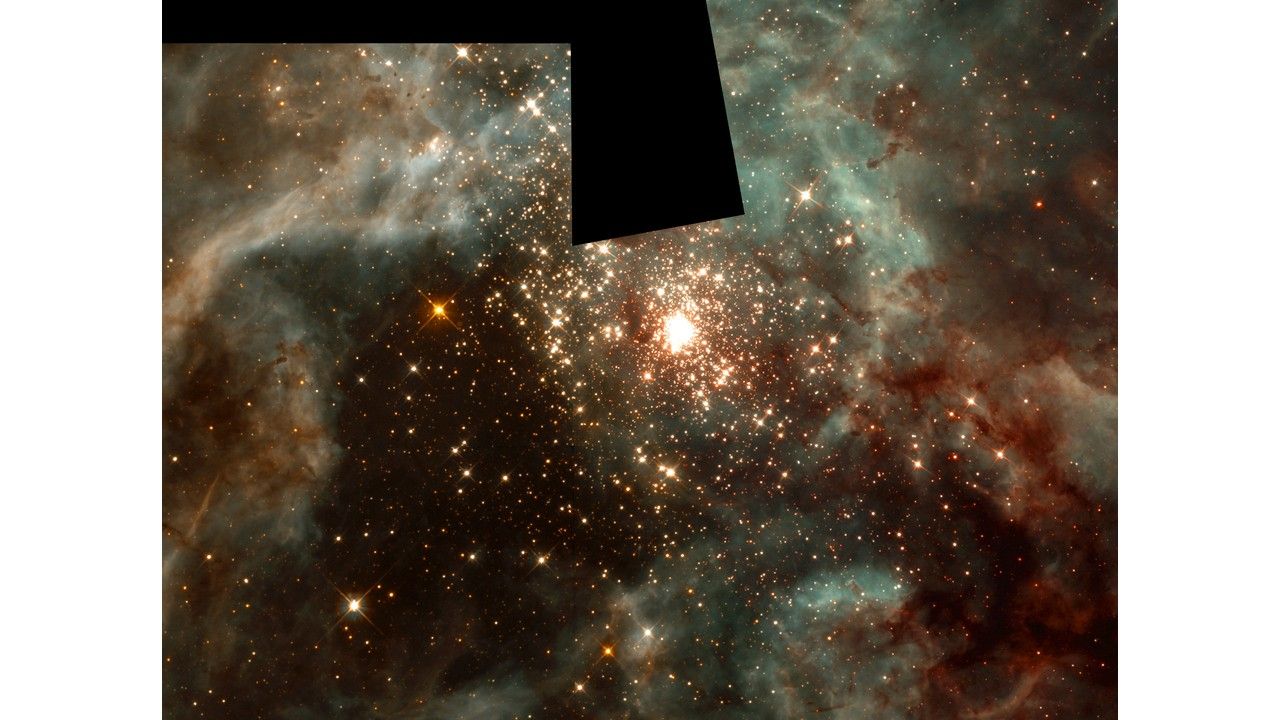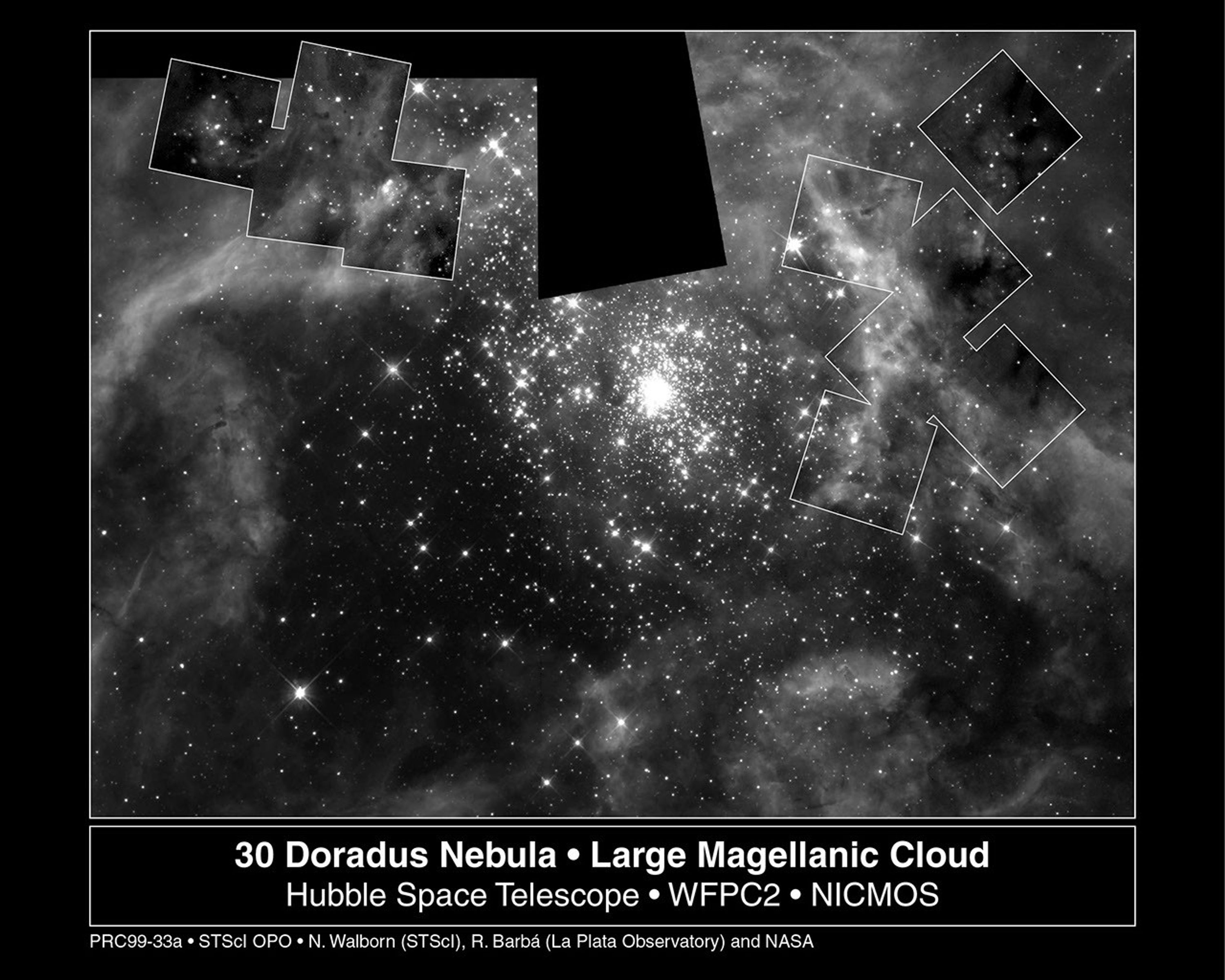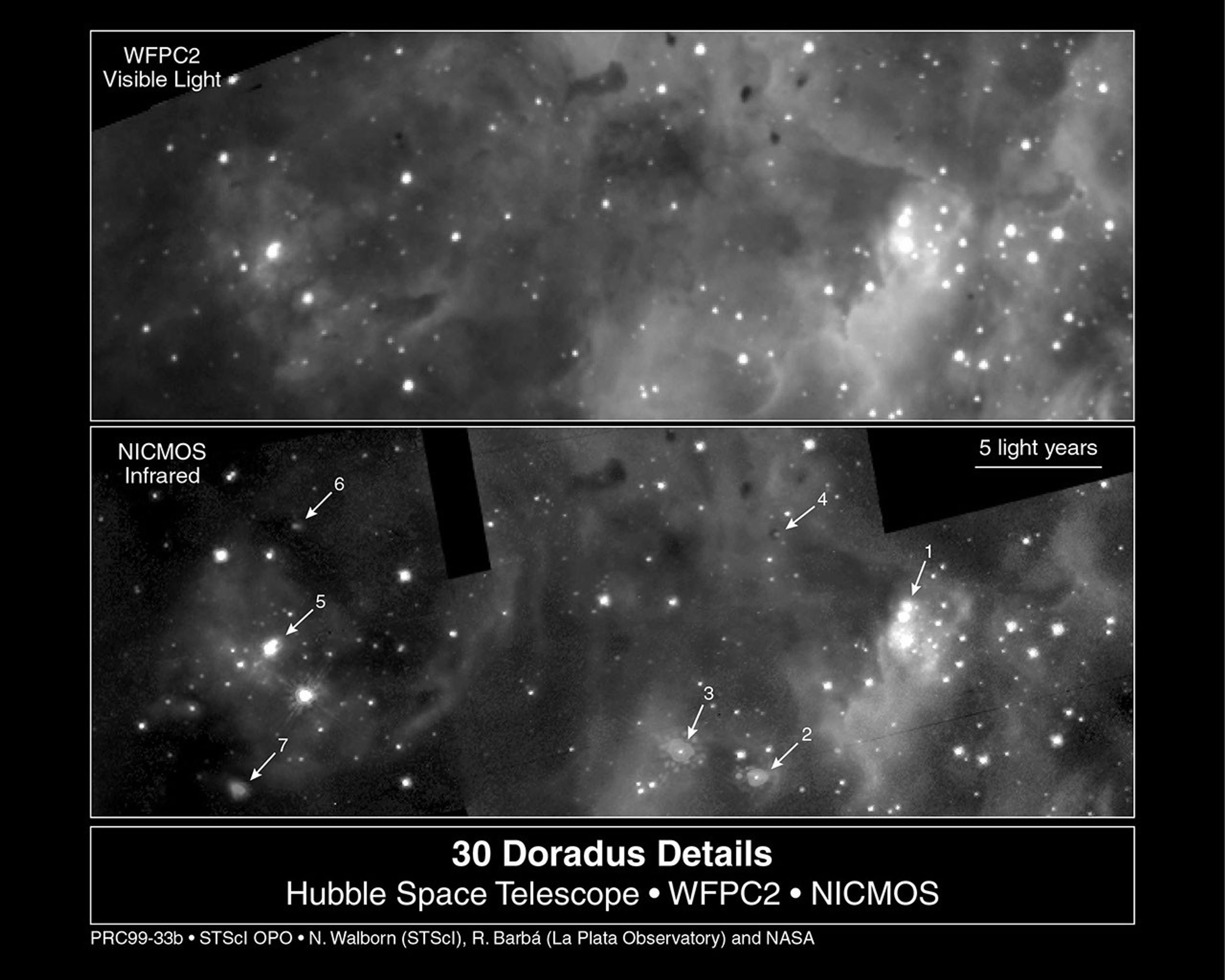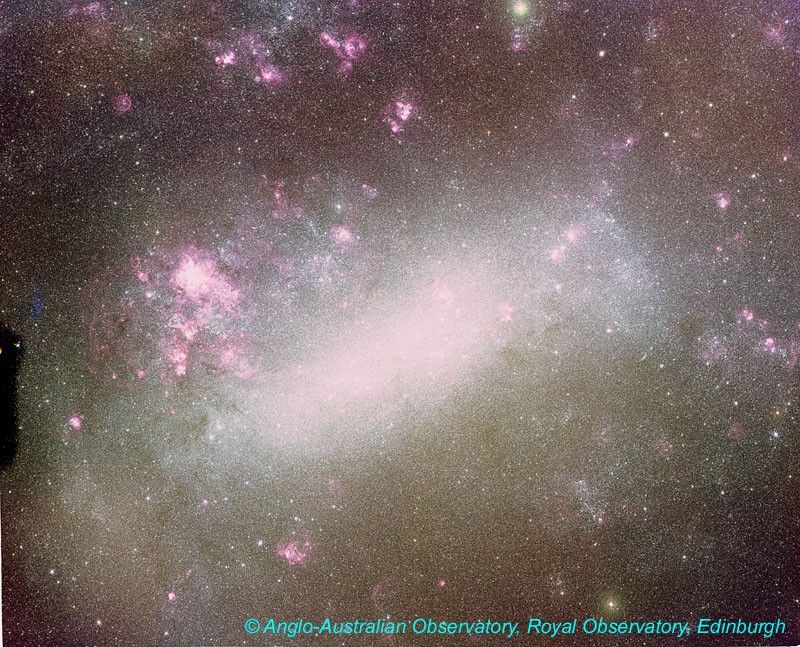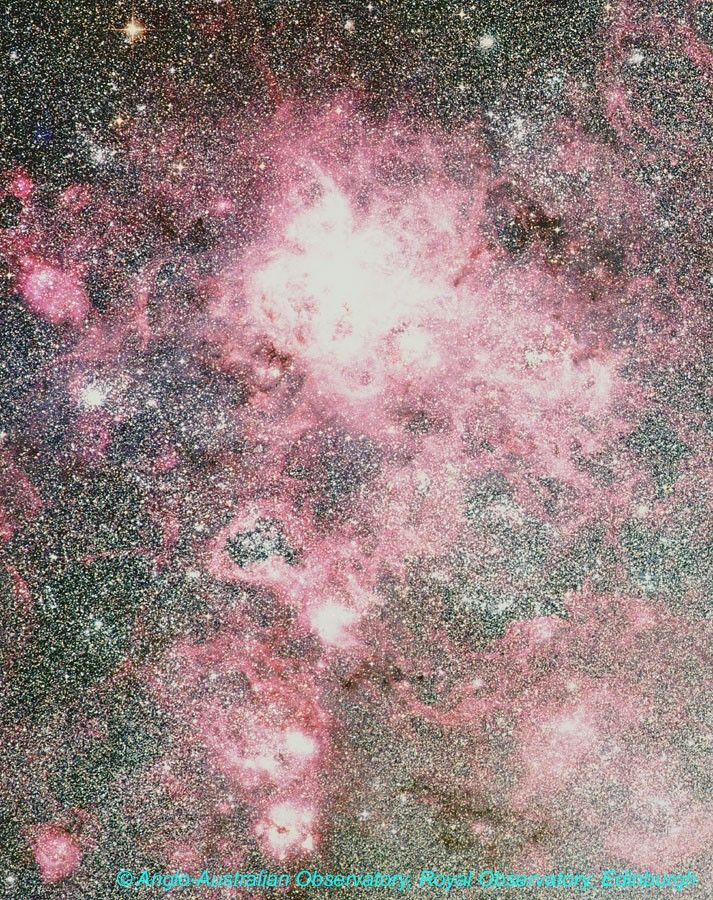Images taken in infrared and visible light by NASA's Hubble Space Telescope recount a vivid story of the turbulent birthing process of massive stars.
The pictures show that powerful radiation and high-speed material unleashed by "hefty" adult stars residing in the hub of the 30 Doradus Nebula are triggering a new burst of star birth in the surrounding suburbs. Like their adult relatives, the fledgling stars are creating all sorts of havoc in their environment. Nascent stars embedded in columns of gas and dust, for example, are blowing away the tops of their nurseries, like a volcano blasting material into the sky. Jets of material streaming from another developing star are slamming into surrounding dust and gas in opposite directions, causing it to glow in moving patterns.
The stellar action is happening relatively nearby, 170,000 light-years from Earth in the Large Magellanic Cloud, a satellite galaxy of the Milky Way. This backyard nursery is a great laboratory for studying the details of the birth and development of "hefty" stars and multiple-star systems.
"This region is larger and contains more massive stars than any similar object in our galaxy," says astronomer Nolan R. Walborn of the Space Telescope Science Institute in Baltimore, Md. "In fact, it is the largest such nebula in the entire Local Group of galaxies. We're able to clearly see objects in the Large Magellanic Cloud because their light is not blocked by interstellar dust, which impedes our study of objects in the Milky Way. Furthermore, it is near enough that individual stars and gaseous structures within it can be studied in detail with large telescopes.
"Thus, 30 Doradus provides a model for interpreting even larger starbursts in distant galaxies, for which detailed resolution is not possible. The Hubble images of 30 Doradus reveal characteristics of massive star birth never before seen so clearly, and some of them not at all."
The creator of these powerful cosmic forces is R136, a two-million-year-old central cluster of massive stars. These "heavy" stars have temperatures 10 times that of the Sun and masses up to 100 times greater. Such stars emit prodigious amounts of energy through ultraviolet radiation and high-speed gas. They shed bubbles of material at speeds of thousands of miles per second, which collide with surrounding dense clouds composed predominantly of cold, molecular hydrogen. Some of the clouds collapse, igniting a spate of second-generation stars. Most of these new stars are less than a million years old.
Astronomers have not determined how many fledgling stars reside in 30 Doradus, but they estimate the number to be in the thousands, which is a significant fraction of the original generation of stars. All of these stars are packed into a 600-light-year-wide nebula.
Ultraviolet light emitted by the hot stars that make up R136 energizes the clouds of gas, illuminating the surrounding region and showing off the tempestuous activity. The images of this region, taken with the Wide Field and Planetary Camera 2 (WFPC2) and the Near Infrared Camera and Multi-Object Spectrometer (NICMOS), show immense clouds of dust, several in the form of pillars 5 to 10 light-years tall, giant incubators where young stars and multiple star systems are forming. Resembling the towers of the Eagle Nebula, these columns of dust are oriented toward the luminous central star cluster, suggesting that the cluster's powerful emissions are creating these stellar nurseries.
Radiation emitted by some of the fledgling stars has begun to erode their natal dust columns; their emergence from these columns can be seen in the visible-light images. But others are still completely immersed in their stellar incubators. These newborn stars can be discerned only in the infrared images, and many of them have never before been seen. Astronomers have inferred that many of these new stars, based on their total brightnesses, also have very large masses.
Other new stars are shooting twin jets of material into the surrounding clouds of dust and gas, causing them to glow. These jets suggest that the stars have rotating disks of material surrounding them. The disks shape and aim the jets.
"The observation of bipolar outflows from massive star formation suggests that accretion disks are essential in forming 'heavy' stars, just as they have been established to be a crucial factor in creating low-mass stars in our solar neighborhood," Dr. Walborn explains.
This wave of star birth will continue to migrate farther out in the nebula. In a few million years, 30 Doradus will be a giant shell of hot, glowing hydrogen, with its most massive stars around the periphery. The once-thriving hub of 30 Doradus will be much dimmer: the short-lived massive stars in the central cluster (R136) will have disappeared, and only its lower-mass members will still be present.
The WFPC2 pictures were taken in 1994 by two of the camera's designers, astronomers John Trauger of NASA's Jet Propulsion Laboratory and James Westphal of the California Institute of Technology, both in Pasadena, Calif. Walborn and Rodolfo Barba' of the La Plata Observatory in La Plata, Argentina, used the visible-light images, together with lower-resolution infrared images from ground-based observatories, as guides to probe deeper into the dusty cloud nurseries with Hubble's infrared camera, NICMOS. The NICMOS pictures were taken in February and March 1998.
Infrared wavelengths are ideal for investigating the birth processes of stars, which occur within dense dust clouds that absorb, sometimes completely, the visible wavelengths of light. The longer, infrared wavelengths can penetrate the dust much more easily, emerging from the clouds to bring astronomers information about what is occurring in their interiors. The combination of visible and infrared images of the same celestial field is often very useful for these studies because of the striking differences they display.
The Space Telescope Science Institute is operated by the Association of Universities for Research in Astronomy, Inc. for NASA, under contract with NASA's Goddard Space Flight Center, Greenbelt, MD. The Hubble Space Telescope is a project of international cooperation between NASA and the European Space Agency.


